“If thou faint in the day of adversity, thy strength is small.” Proverbs 24:10

Above: Michigan death certificates for stillborn babies usually had a vertical line drawn down the middle. Below: This three-year-old Ludington girl died of typhoid fever in 1910. The family lived less than a mile from the Johnson home on East Melendy Street.
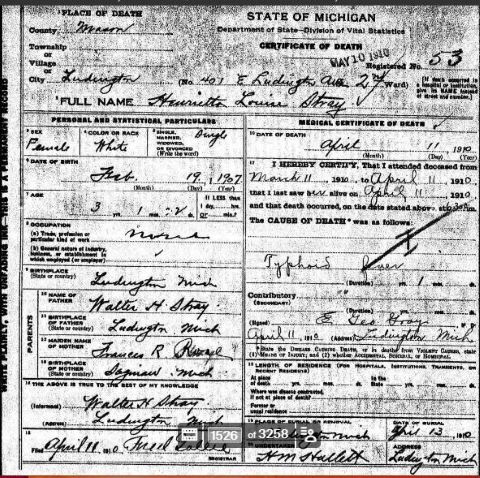
In my so far futile attempt to find “Frank” Johnson, (who, if he had lived, or in fact, ever existed, would have been my first cousin once removed), I have come across multiple reminders of how hard life was, especially for mothers and children, in those times. There were so many death certificates of small children and infants from Michigan during the time Frank would have lived, that I was constantly distracted in my Ancestry.com search.
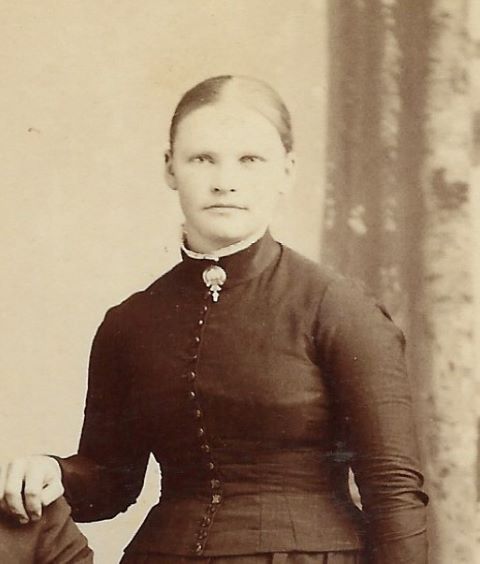
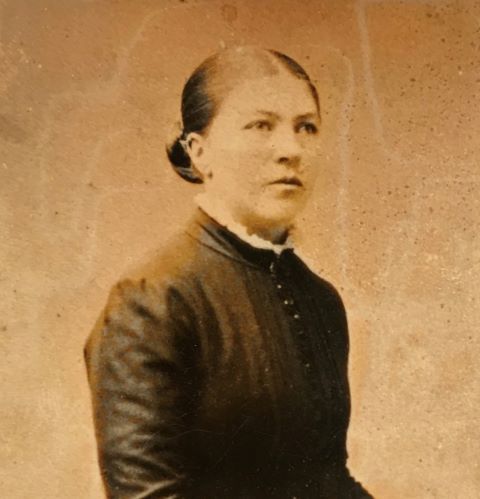

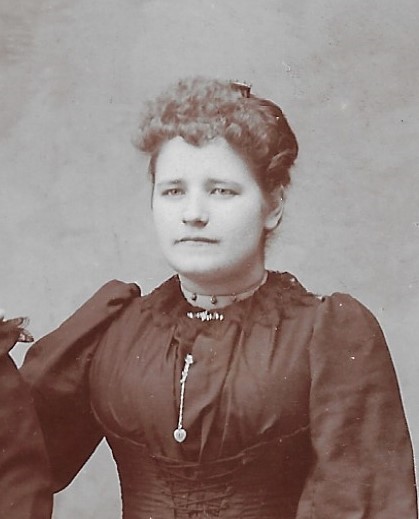
Then I started thinking about my own family and realized they weren’t so different from the majority of people in those days. The truth is that all four of my great grandmothers lost two children each, the youngest at birth and the oldest at 15.
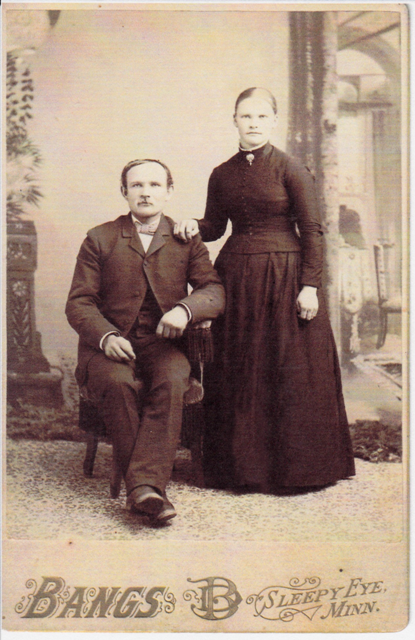
In 1891, Ole and Marie Anderson lost their first child, a girl, who died of whooping cough that turned into pneumonia at the age of around three. My great aunt Jennie wrote: “My older sister was born in the little sod house on Feb. 18, 1888, I was born there too on Mar. 7, 1891. Her name was Lydia Sophie and she died the 11th of Sept., in 1891- I was just a few months old and we both had whooping cough. She got pneumonia and died but I survived. I don’t think my mother ever got over the loss of her first baby.” Later they had another baby girl, whom they also named Lydia. I have seen this practice quite a bit in my family tree, which, though not uncommon in those days, can make it tricky for us family historians.
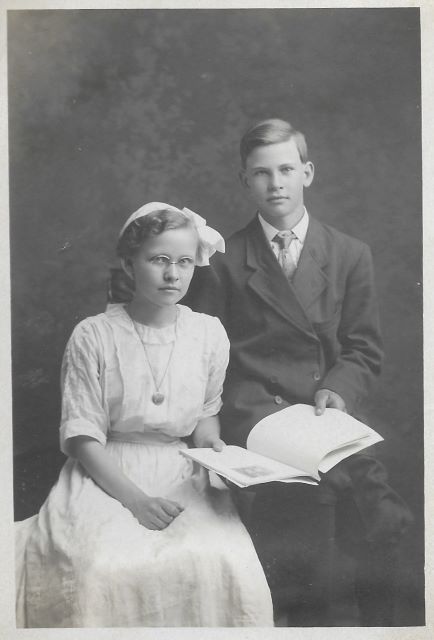
In a letter to me dated 1979, Jennie tells the story of her younger sibling, born in 1894 between the second Lydia and my grandfather, George (above). Jennie describes her mother being in labor and her father, Ole, going to town with a horse drawn buggy to get the doctor. She wrote: “The midwife said something was wrong and Dad better get the Dr. He drove 7 miles to Springfield and then the Dr. from what Dad told him said it was too soon for him to come.” Ole returned, only to find out that things were going worse than when he had left. “Dad drove back the 7 miles and found Mom much worse, and he just turned around and raced back to get the Doctor, almost killed a team going back again.” The baby had been in breach position and had passed away. “When he arrived my mother was terrible sick and the Dr. found the baby was in a breach position and he should have come when Dad first came for him. If it had been now she’d have had a Cesarian, but no one ever heard of that.” To my knowledge “Baby Boy Anderson” was never named.
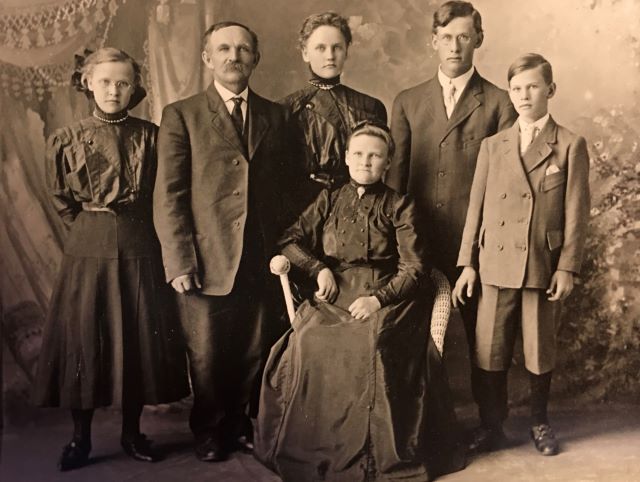
Above: Ole and Marie in later years with their four surviving children, Lydia, Jennie, Andrew, and George. Below: Johannes and Petronella Peterson with their children, Agda Oscar, Esther, and Hilma.

Petronella Peterson also had six children, two of whom did not survive. I know much less about them than about the Anderson babies, but I know they were both boys. I don’t know their birthdates, but I know that Petronella and her husband, Johannes were married in 1891. My grandmother, Hilma, (who married George Anderson in 1927) was their youngest child, born in 1902. Hilma’s oldest sister Agda was born in 1893, so there could have been time for at least one of the boys to have been born before her. We know they had both been born before Hilma, based on the census information below. I’ve never heard anything about the possibility of them having been twins.
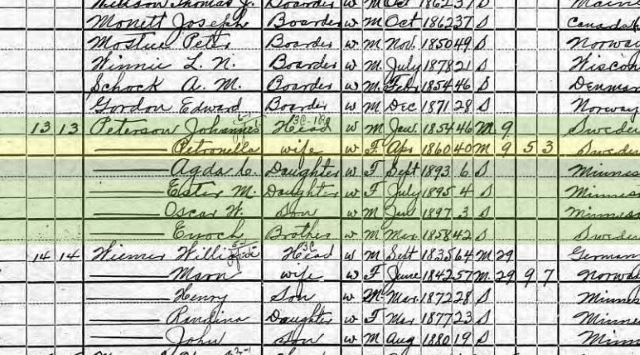
By the 1900 census, Agda was 6, Esther was 4, and Oscar was 3 years old, Hilma had not been born yet, and Petronella had given birth to five, but only had three living. Petronella was 40, and Johannes, was 46. In the family below them, you can see that the wife had only 7 out of nine children living. The numbers to the left of the number of children is the number of years each couple had been married.
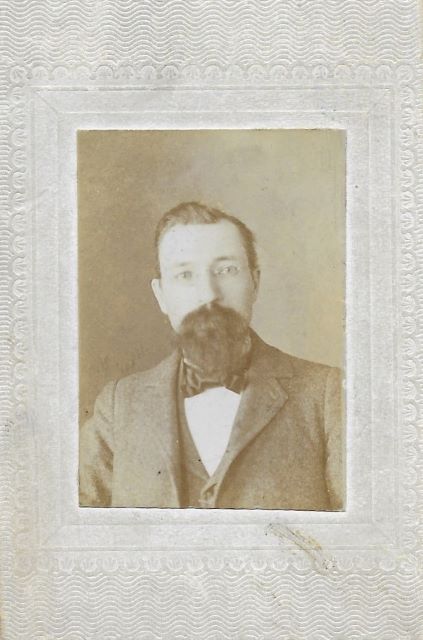

On the Johnson side of the family, my great grandparents Nels and Anna Caroline (pictured above sometime around 1897) suffered the loss of two toddlers. The first was Ruth Mildred, (known mainly as Mildred), who came down with diphtheria in 1910, when she was between two and three years old.

My grandfather Emil wrote: “Mildred, 3, died of diphtheria, recognized as such after it was too late. She was a happy child and used to sing and skip along like a nymph.” Emil and his older brother Nels Ivar were not at home when Mildred was diagnosed. The doctor thought it best that they stay in a hotel. “He inoculated Nels and myself, and ruled it was best we live in a hotel. This was another sad time, especially for my mother. I remember the doctors tried to comfort her by saying, you have other children to live for. She loved each one so much, this was small comfort.” Emil went on to say that this was when he learned how far-reaching a mother’s love can be, adding that “only the love of God in Christ Jesus extends further and deeper than mother’s love”.
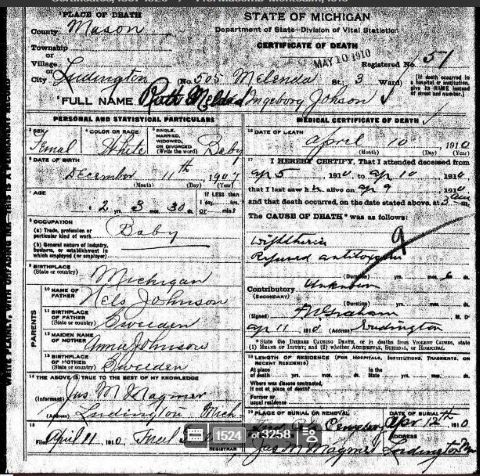
On Mildred’s death certificate, you can read the words “refused antitoxin” under the word “diphtheria”. A bit of research revealed that there was, in fact, an antitoxin for diphtheria at that time, but it was viewed with skepticism due to the possibility of fatal side effects.

The next year, Werner Erland was born with congenital heart defects, which affected his health until he passed away in 1912. His death certificate states bronchial pneumonia as the cause of death, with congenital heart issues contributing. His funeral took place in at the Johnson home at 505 East Melendy Street in Ludington, Michigan (pictured above). I have a photo of little Werner’s casket, surrounded by flowers and set up in what appears to be the living room. It may seem odd to us now, but back then many funerals were conducted out of the home of the deceased.

In February 1900, in Sioux Falls, South Dakota, my great grandmother Charlotte Nelson, (pictured above), lost her husband, Nels, to appendicitis. According to the obituary, the funeral was at their home, 514 North Spring Avenue. But prior to Nels’s death, the couple had lost a little girl named Hildur, (which I have also seen also spelled “Hilda” or “Haldor”) seen here sitting on Nels’s lap.
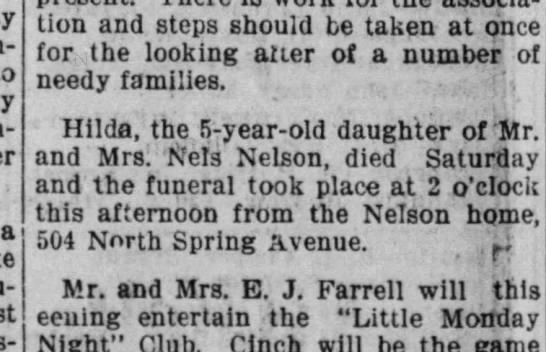
The article from the Sioux Falls “Argus-Leader” for December 12, 1898, says she was five years old, but according to her church baptism records, she was born on July 9, 1894, which would have made her about four and a half. I don’t have information as to what she died from. I do have a photo of her tiny casket, surrounded in flowers like Werner’s. Her obituary says that the funeral was at their home, which was mistakenly listed as 504 N. Spring Avenue instead of the actual address of 514.
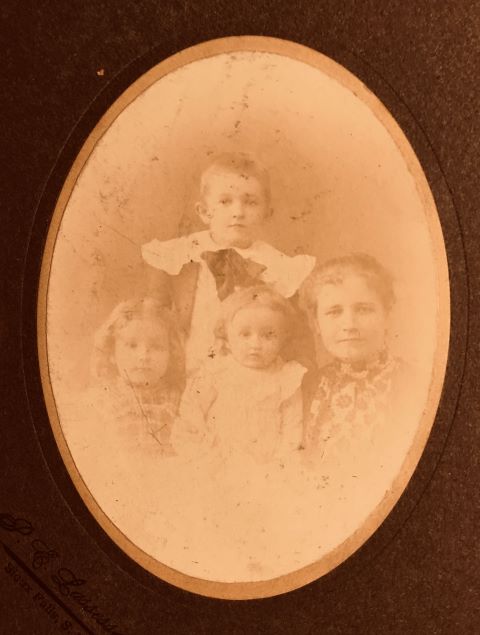
After her husband’s death, Charlotte was left with three young children: Oscar, Alma, and Edla. My paternal grandmother, Edla, was just a toddler. The young mother remarried in 1903, and had two more children, Margaret, born in 1904 and Harry, in 1910.
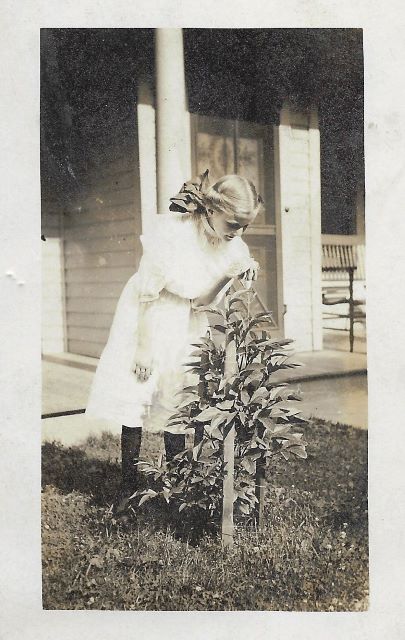

Three years after their half brother Harry was born, Edla’s sister, Alma, (pictured above) died of tuberculosis at the age of 15. As with her father and older sister Hildur, Alma’s obituary describes the funeral as taking place at the family home, 514 North Spring Avenue in Sioux Falls, South Dakota.
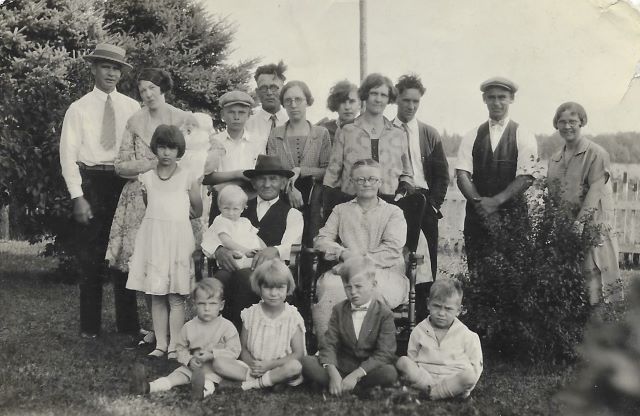
Above: Ole and Marie Anderson with their children and grandchildren in 1928. Below: Nels and Anna Caroline with family members at 505 E. Melendy, possibly around 1924.
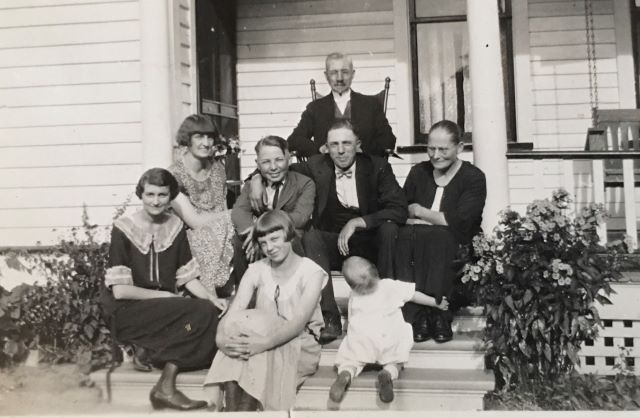
How does anyone survive all the heartache so many of our ancestors endured? I have to admit I don’t know. For my family, I believe their faith in an unfailing God and their love for each other explain part of it. The other thing, I think, was hope. They had hope that a better day was coming, hope that they would someday see the rewards of their labor in this new land called America. And if you think about it, the fact that they never gave up is directly related to our being here today. No matter what our backgrounds, we all share DNA with people who have overcome adversity. And isn’t that enough to encourage us as well?
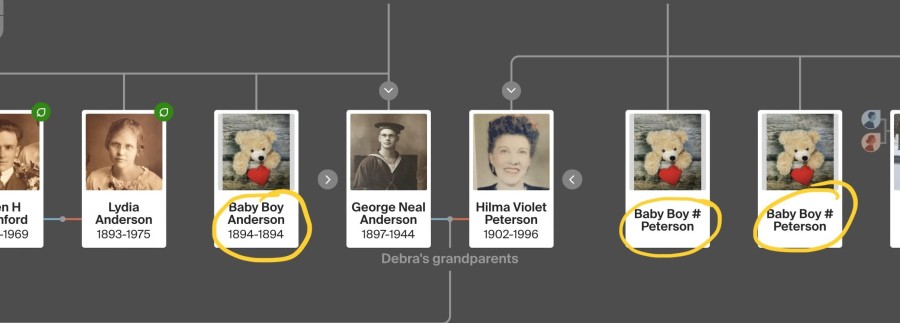
Wow I no nothing about either side of my family. Never met a cousin and my Dad was adopted. I did AncestryDNA and found cousins but no responses 😏
Aww man! That’s too bad they never responded!😕
It is sad reading through documents like the ones you have shared and learning of the losses. As I uncover my own family history I often find myself wondering what life must have been like for them, certainly it was more challenging.
Strange…I made a comment, but it didn’t post. Let me try again.
It is sad reading about the loss of loved ones. As I uncover my own family history I often find myself wondering what their lives were like. It was certainly challenging, health care has come a long way as have advances in other areas. Keep sharing your stories, they are interesting to read.
Are you sure it didn’t come through as Anonymous? 🤔